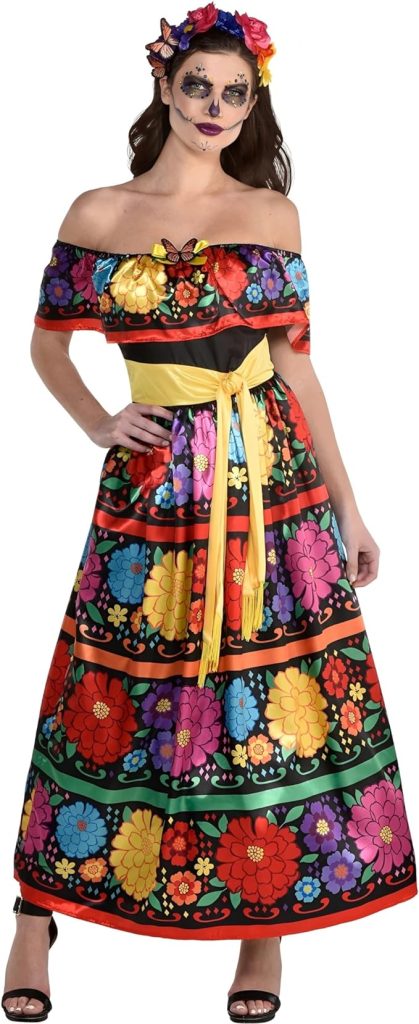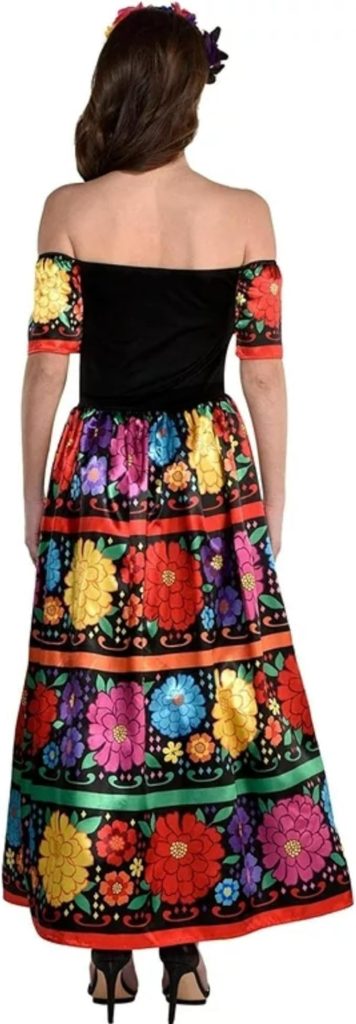The vibrant and soul-stirring tradition of Dia de los Muertos (Day of the Dead) transcends mere celebration, inviting participants into a deep, immersive experience that honors the dearly departed. Central to this sacred observance are the elaborate and symbolic dress-up customs. Through the lens of these sartorial and makeup choices, individuals connect with heritage, express artistic creativity, and facilitate a dialogue between the living and the spirits.
Part I: Historical Roots and Cultural Significance
Origins of the Tradition
The act of dressing up for Dia de los Muertos traces its roots back to ancient Mesoamerican civilizations, including the Aztec and Maya peoples, who held vibrant festivals to honor their ancestors and deities associated with death. The convergence of these indigenous rituals with Spanish Catholic traditions in the post-colonization era gave birth to the modern Dia de los Muertos, a unique blend of solemnity and celebration. Dressing up, therefore, serves as a bridge connecting past and present, allowing participants to embody the spirit of the celebration literally.

The Symbolism Behind the Costumes
The costumes worn on Dia de los Muertos are rich in symbolism, reflecting themes of life, death, and rebirth. Traditional attire often includes elements representative of nature, such as flowers and butterflies, signifying the cycle of life. Skeleton costumes and skull masks, known as “calaveras,” playfully nod to the acceptances of death’s inevitability. Each piece of the ensemble, from the flower crowns to the intricately designed masks, narrates a story of remembrance, loss, and celebration.
Part II: The Art of “La Catrina” and Face Painting
Evolution of “La Catrina”
“La Catrina,” an elegantly dressed female skeleton, has become an iconic figure of Dia de los Muertos. Originally created by illustrator José Guadalupe Posada in the early 20th century, La Catrina was a critique of Mexican society’s emulation of European aristocracy. Today, dressing up as La Catrina has transcended its satirical origins, evolving into a profound declaration of Mexican heritage and a reminder of the universality of death. The elaborate gowns and sophisticated hats adorned with feathers and flowers showcase the fusion of historical satire with contemporary cultural pride.
The Significance of Skull Face Painting
The transformation of the face into a colorful skull is a central ritual in Dia de los Muertos dress-up. This practice, deeply personal and creative, employs vibrant paints, sequins, and floral motifs to craft designs that reflect individual stories and artistic expressions. Each painted face is a living canvas, commemorating a loved one’s life or representing an aspect of death’s nature. This tradition not only challenges the taboo around death but also brings to life the spirits of the departed, making them an integral part of the celebrations.

Part III: The Communal and Familial Aspects
Dressing Up as an Act of Unity
Dia de los Muertos provides an opportunity for communities and families to come together in remembrance and celebration. The collective act of dressing up fosters a sense of belonging and shared purpose, bridging generations through shared stories and cultural heritage. Whether it’s crafting costumes, applying makeup, or participating in parades, the communal aspect of preparation and celebration strengthens communal ties, weaving a tapestry of memory and reverence that spans across ages.
Passing Down Traditions
The customs surrounding Dia de los Muertos, including dress-up, are an essential vehicle for cultural transmission. Through the meticulous preparation of costumes and makeup, elders pass down ancestral knowledge and stories, engaging the younger generation in practices steeped in history and meaning. This continuity ensures the survival of these traditions, allowing them to adapt while retaining their core significance.

Part IV: Modern Adaptations and Global Influence
Contemporary Interpretations and Fashion
In recent years, Dia de los Muertos dress-up traditions have intersected with contemporary fashion and pop culture, yielding innovative interpretations that respect the celebration’s roots while exploring new expressions. Designers and artists draw inspiration from the intricate patterns and vivid imagery of Dia de los Muertos attire, incorporating these elements into modern fashion, art, and media. This fusion not only enriches the tradition itself but also introduces its beauty and depth to a global audience.
Dia de los Muertos Goes Global
Therefore, As Dia de los Muertos has gained international recognition. The practice of dressing up has spread beyond Mexico’s borders, embraced by diverse cultures around the world. This global adoption reflects a growing appreciation for the celebration’s underlying messages about mortality, memory, and respect for the past. As people from different backgrounds participate in Dia de los Muertos dress-up. They contribute to a cross-cultural dialogue, fostering mutual understanding and shared human experiences.

Part V: Ethical Considerations and Respectful Engagement
With the international popularity of Dia de los Muertos comes the responsibility to engage with its traditions respectfully
and thoughtfully. It’s essential to differentiate between cultural appropriation and cultural appreciation when participating in Dia de los Muertos dress-up. Especially for those outside the Mexican community. Appropriation occurs when elements of a culture are adopted without understanding their significance or context. Often reinforcing stereotypes or contributing to commodification. To avoid this, individuals are encouraged to educate themselves on the history and meaning behind Dia de los Muertos and engage in practices that honor and respect its traditions.
Fostering Authentic Connections
Moreover, For those wishing to participate in Dia de los Muertos celebrations respectfully. It’s important to seek out authentic experiences and learn from those who are deeply rooted in the tradition. Participating in community events, workshops, and ceremonies that are open to wider audiences can provide valuable insights and understanding. By approaching these experiences with humility and openness. Individuals can form genuine connections with the cultural essence of Dia de los Muertos and contribute positively to its global appreciation.
Part VI: The Future of Dia de los Muertos Dress-Up
Preserving Traditions While Embracing Change
Amidst these innovations, preserving the heart and soul of Dia de los Muertos dress-up traditions remains paramount. As global interest increases, the challenge and opportunity lie in maintaining the celebration’s authenticity and cultural significance. This involves not only passing down traditions through generations but also adapting them in ways that remain true to their origins. As communities and individuals navigate these changes. The spirit of Dia de los Muertos – one of remembrance, love, and reverence for life and death. That will continue to shine brightly, guiding the way forward.
A Celebration of Life Through Art
Dia de los Muertos dress-up is a rich tapestry woven from threads of history, culture, memory, and artistic expression. The tradition of dressing up for Dia de los Muertos is a testament to human creativity and our shared need to honor and remember the departed. Finally, It serves as a reminder of our connections to one another, the cycles of life and death. And the profound meaning behind the costumes we wear. Participating in this timeless ritual allows us to celebrate the eternal dance of life and death, embodying the stories of our ancestors and the symbols of our heritage.
